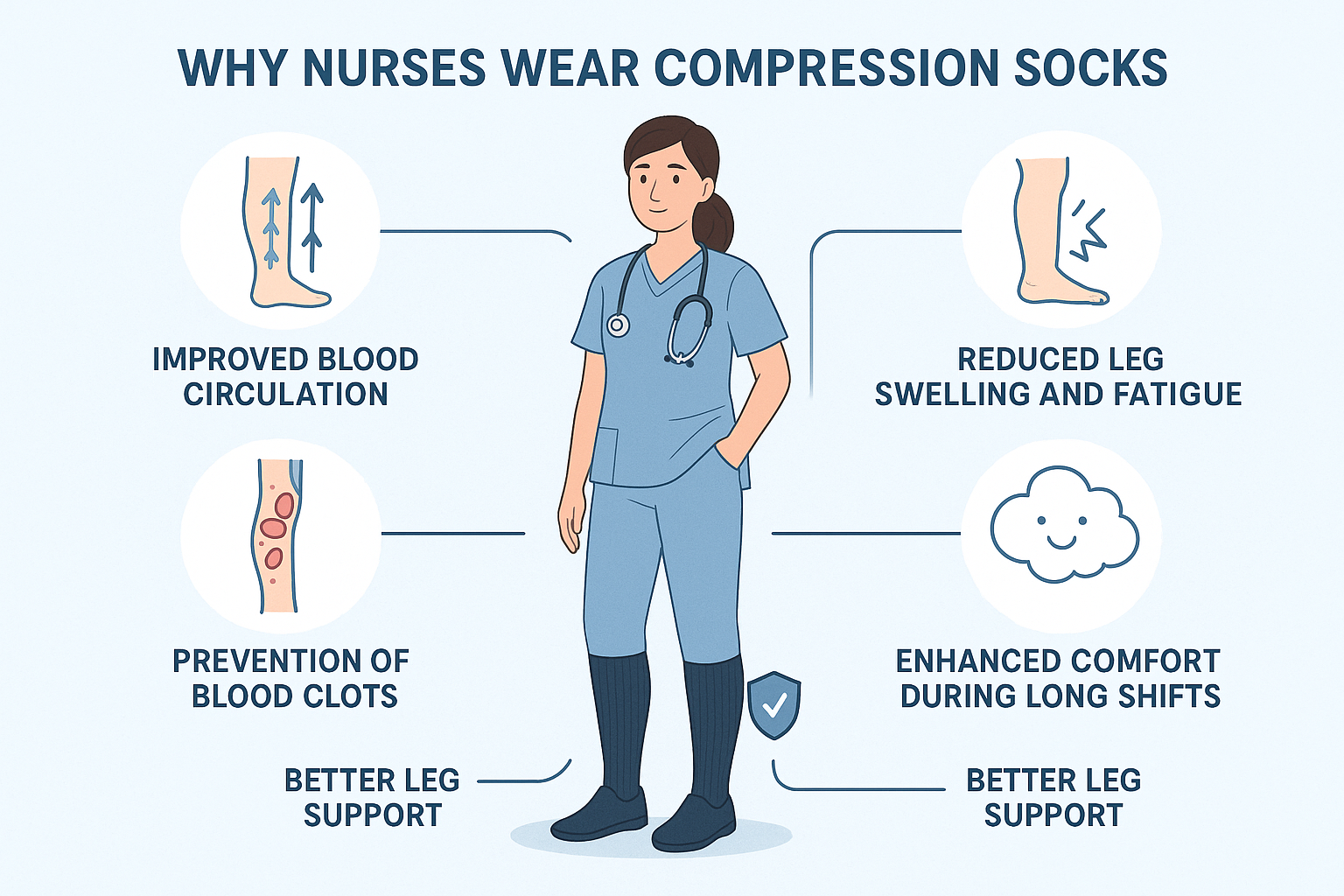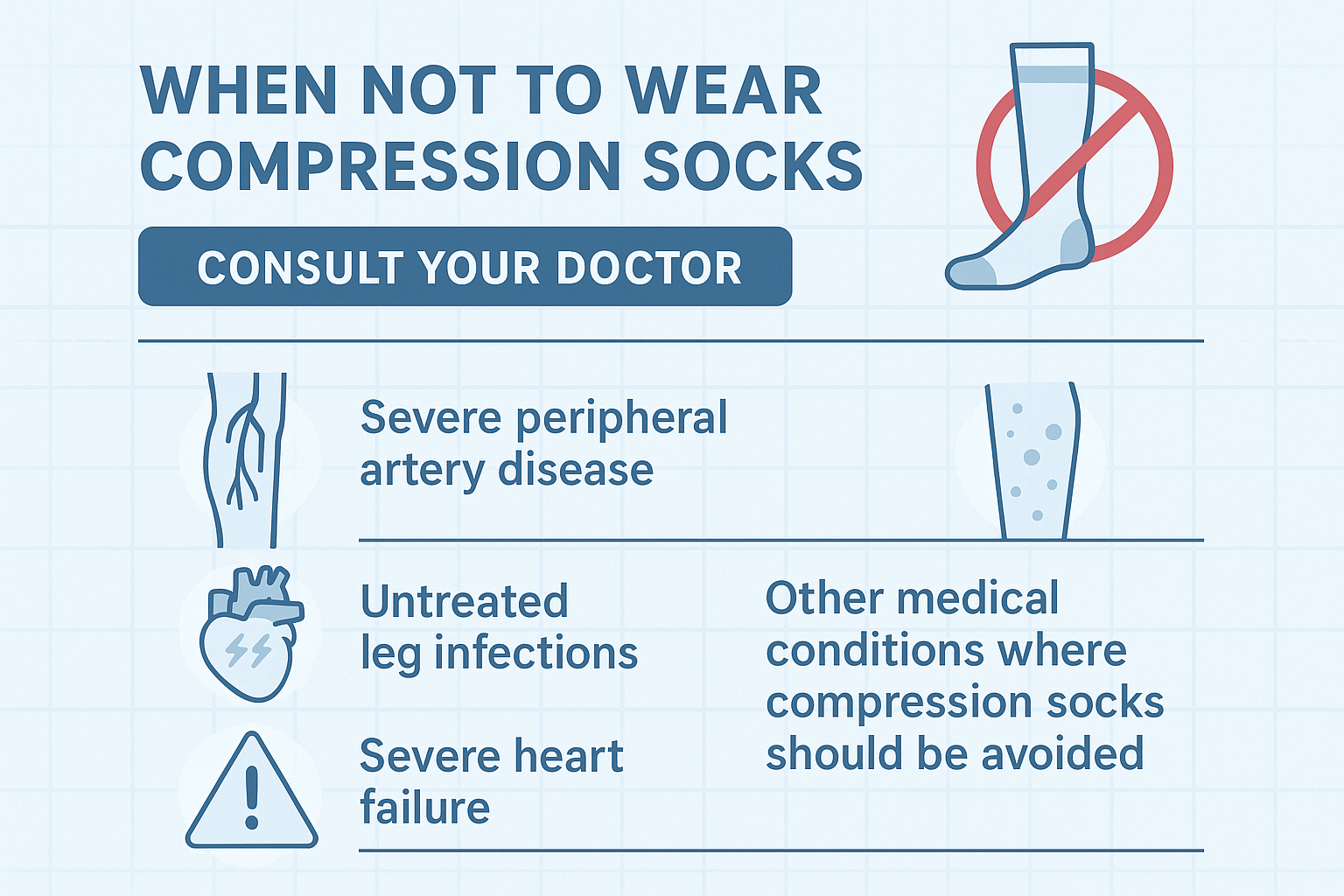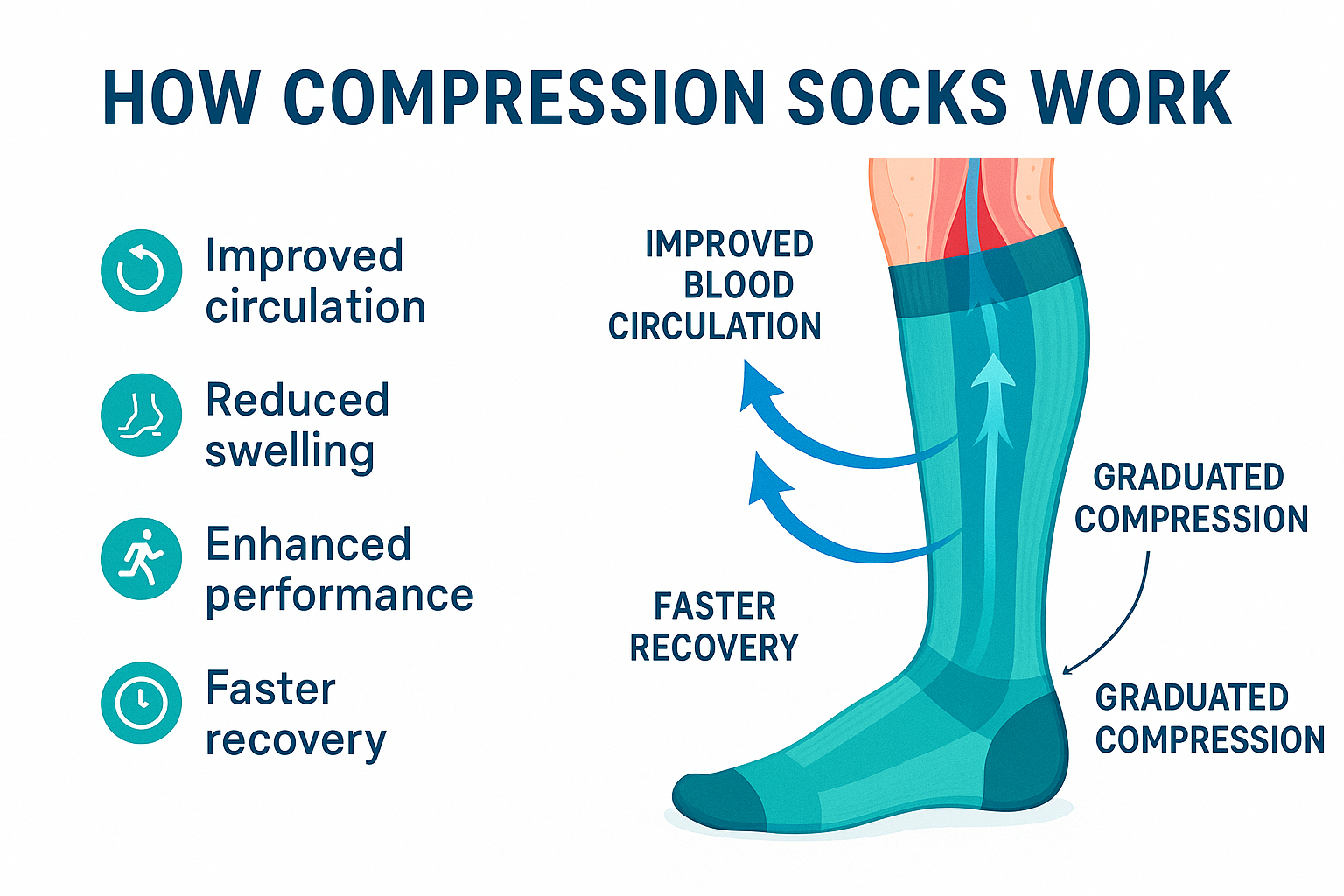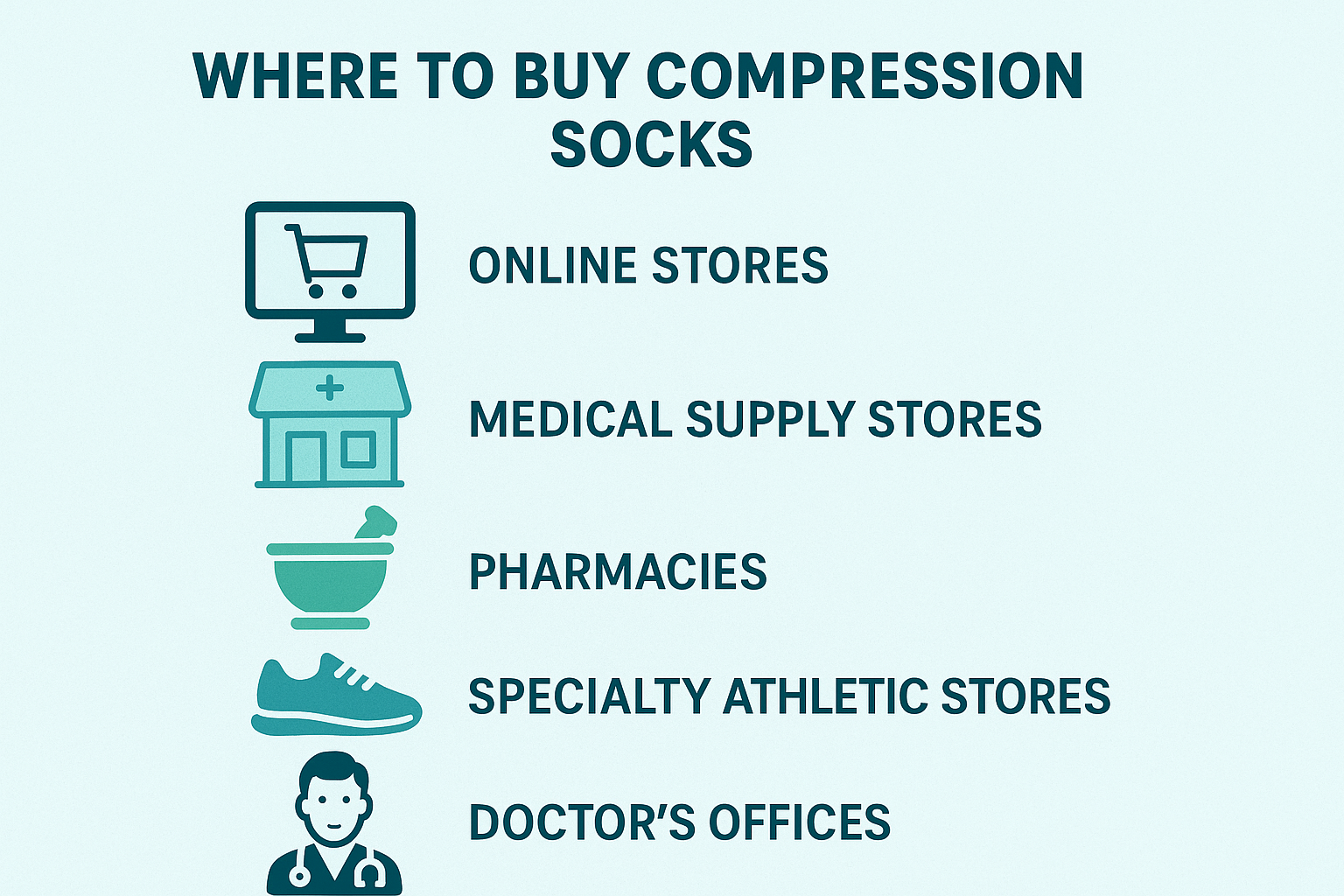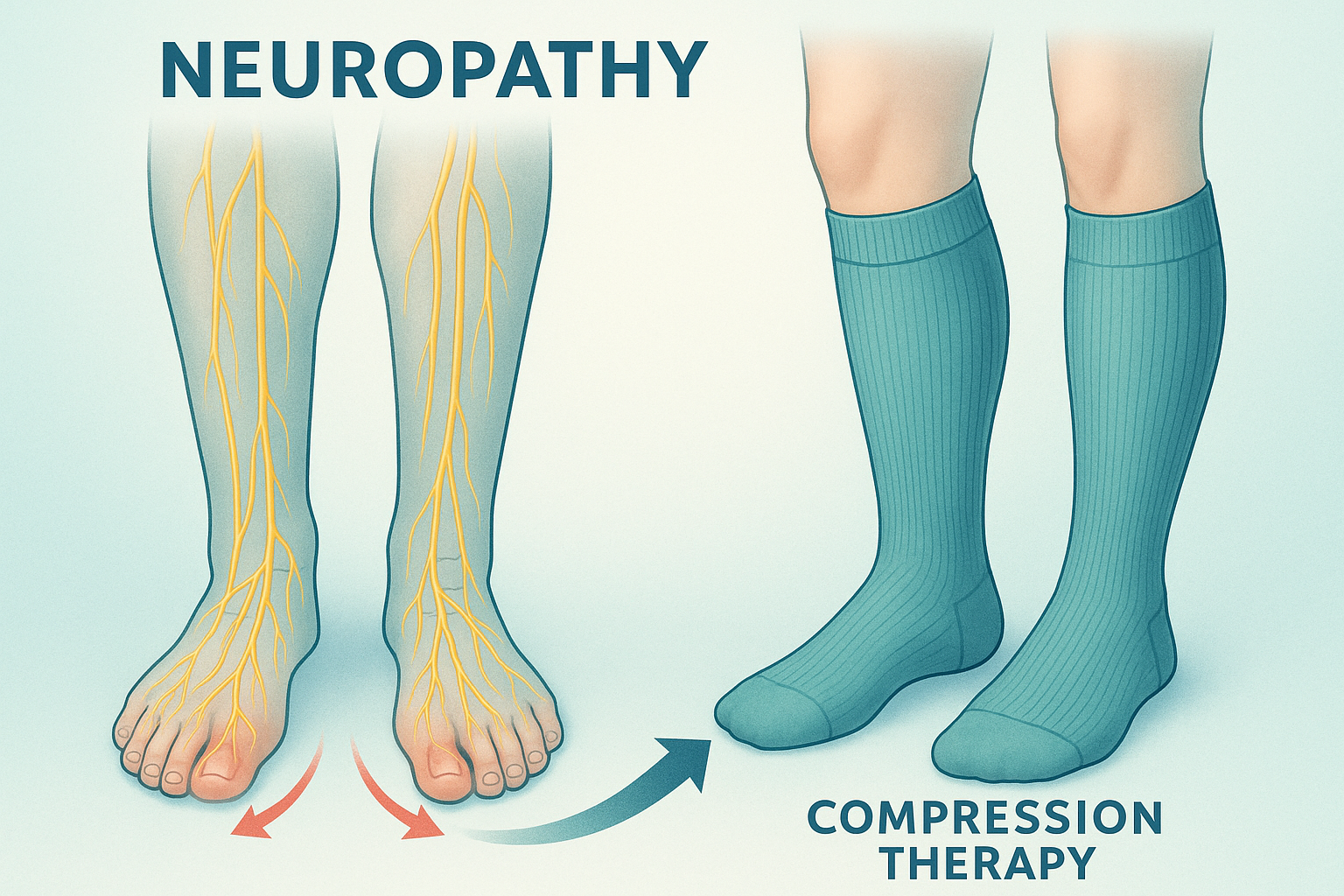What Do Compression Socks Do?
Compression socks have become a go-to solution for athletes, frequent travelers, workers on their feet, and anyone looking to improve leg health. But what do compression socks actually do? In short, they apply gentle, graduated pressure to your legs, which improves circulation, reduces swelling, and supports muscle recovery. In this article, we’ll break down the science, the benefits, and how to choose the right pair for your lifestyle.
How Do Compression Socks Work?
Compression socks are designed with specialized elastic materials that apply consistent pressure to the lower legs. This pressure is typically stronger at the ankle and gradually decreases as it moves up the calf or thigh. This design, known as graduated compression, helps encourage blood flow back toward the heart instead of pooling in the feet or ankles.
By supporting better circulation, compression socks reduce the risk of blood clots, alleviate leg fatigue, and provide lasting comfort during long hours of standing or sitting.
Main Benefits of Compression Socks
Let’s explore the key reasons why people wear compression socks daily:
1. Improved Blood Circulation
The primary purpose of compression socks is to improve blood flow. This helps prevent conditions like deep vein thrombosis (DVT) and varicose veins. Whether you’re sitting on a long flight or working a 12-hour shift, compression socks keep blood moving efficiently.
2. Reduced Swelling
Edema, or swelling in the legs and feet, is often caused by fluid buildup. Compression socks reduce this by applying pressure that prevents fluids from pooling in the lower extremities. This is especially beneficial for pregnant women, people with circulation issues, and those recovering from surgery.
3. Faster Muscle Recovery
Athletes often swear by compression socks because they reduce muscle soreness and recovery time. By limiting muscle vibration during exercise and enhancing oxygen delivery afterward, compression wear can help you bounce back faster from workouts or competitions.
4. Enhanced Comfort During Travel
Ever step off a long flight with swollen ankles? Compression socks are a proven solution. They prevent “economy class syndrome,” where prolonged sitting slows circulation and increases the risk of clotting.
5. Pain Relief and Leg Support
For those with varicose veins, chronic venous insufficiency, or tired legs from standing all day, compression socks act as supportive gear that reduces pain and discomfort. They’re widely recommended by healthcare professionals for both prevention and treatment.
Who Should Wear Compression Socks?
Compression socks are useful for a wide variety of people. Some of the most common groups include:
- Athletes – to aid performance and recovery
- Travelers – to reduce swelling on long flights
- Nurses, teachers, and retail workers – who stand for long periods
- Office workers – who sit for hours at a time
- Pregnant women – to manage swelling and improve comfort
- Seniors – to maintain circulation and prevent clotting issues
In fact, almost anyone can benefit from wearing compression socks daily or during specific activities that put strain on the legs.
Compression Levels Explained
Not all compression socks are created equal. They come in different compression levels, usually measured in mmHg (millimeters of mercury):
- 8–15 mmHg: Light compression for mild swelling and everyday comfort.
- 15–20 mmHg: Moderate compression, ideal for travel, pregnancy, or mild varicose veins.
- 20–30 mmHg: Firm compression for medical use, athletes, and those with moderate vein conditions.
- 30–40 mmHg: Extra-firm compression, prescribed for severe venous conditions.
It’s important to choose the right compression level for your needs. For most people, 15–20 mmHg provides the perfect balance of comfort and effectiveness.
Do Compression Socks Really Work?
Yes. Numerous studies confirm the benefits of compression therapy. For example:
- They help reduce swelling and leg fatigue in workers who stand for long periods.
- They prevent blood clots during long flights or hospital stays.
- Athletes report less soreness and quicker recovery when using compression socks after workouts.
Healthcare providers often recommend compression socks as part of treatment plans for circulation problems, and millions of people use them daily with positive results.
How to Wear Compression Socks Correctly
To get the most benefit, you need to wear compression socks properly:
- Put them on in the morning when swelling is lowest.
- Smooth out wrinkles to avoid pressure points.
- Wear them throughout the day, especially during long periods of standing or sitting.
- Remove them at night unless prescribed for overnight use.
Wearing them consistently makes a big difference in comfort and effectiveness.
How Long Should You Wear Compression Socks?
The length of time depends on your lifestyle and health needs. For general comfort, many people wear them during the day and remove them before bed. Athletes often wear them for a few hours after training. For medical reasons, your doctor may recommend daily, all-day wear.
Choosing the Right Pair of Compression Socks
When shopping for compression socks, consider:
- Compression level – based on your needs (mild, moderate, firm).
- Length – knee-high, thigh-high, or full tights.
- Material – breathable fabrics for comfort and moisture control.
- Fit – proper sizing ensures effectiveness and comfort.
- Style – from athletic designs to sleek dress socks, there’s a pair for every occasion.
Explore our full collection of high-quality options here: Green Drop Compression Socks.
Common Myths About Compression Socks
“They’re only for old people.”
False. Compression socks are widely used by athletes, travelers, and young professionals who want better performance and comfort.
“They’re uncomfortable to wear.”
High-quality compression socks are designed for comfort, with breathable fabrics that you can wear all day.
“They don’t actually do anything.”
Numerous medical studies prove the effectiveness of compression therapy. Millions of people experience real benefits daily.
Frequently Asked Questions
Do doctors recommend compression socks?
Yes. Doctors often recommend them for circulation issues, varicose veins, pregnancy, and post-surgery recovery.
Can I sleep in compression socks?
Unless prescribed, it’s usually best to remove them before bedtime. Daytime wear provides the main benefits.
Are there side effects?
When properly fitted, compression socks are safe. If they feel too tight or cause discomfort, try a lower compression level or consult your doctor.
Conclusion: Why You Should Try Compression Socks
So, what do compression socks do? They improve circulation, reduce swelling, speed up recovery, and provide unmatched leg comfort. Whether you’re an athlete, traveler, professional, or simply someone who wants healthier legs, compression socks can make a noticeable difference in your daily life.
Ready to experience the benefits for yourself? Browse our complete collection here: Shop Green Drop Compression Socks.



